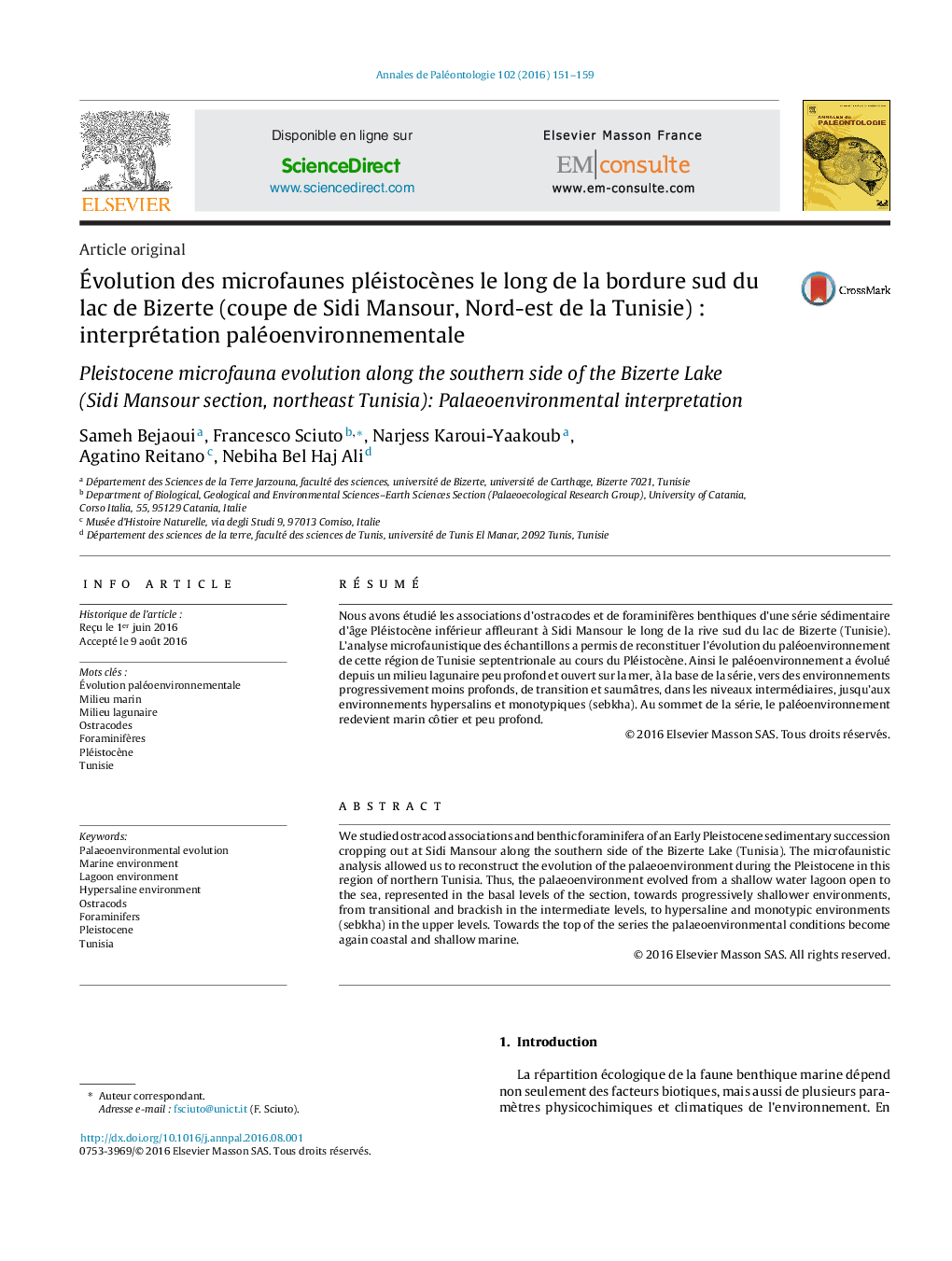| کد مقاله | کد نشریه | سال انتشار | مقاله انگلیسی | نسخه تمام متن |
|---|---|---|---|---|
| 4745234 | 1414196 | 2016 | 9 صفحه PDF | دانلود رایگان |

RésuméNous avons étudié les associations d’ostracodes et de foraminifères benthiques d’une série sédimentaire d’âge Pléistocène inférieur affleurant à Sidi Mansour le long de la rive sud du lac de Bizerte (Tunisie). L’analyse microfaunistique des échantillons a permis de reconstituer l’évolution du paléoenvironnement de cette région de Tunisie septentrionale au cours du Pléistocène. Ainsi le paléoenvironnement a évolué depuis un milieu lagunaire peu profond et ouvert sur la mer, à la base de la série, vers des environnements progressivement moins profonds, de transition et saumâtres, dans les niveaux intermédiaires, jusqu’aux environnements hypersalins et monotypiques (sebkha). Au sommet de la série, le paléoenvironnement redevient marin côtier et peu profond.
We studied ostracod associations and benthic foraminifera of an Early Pleistocene sedimentary succession cropping out at Sidi Mansour along the southern side of the Bizerte Lake (Tunisia). The microfaunistic analysis allowed us to reconstruct the evolution of the palaeoenvironment during the Pleistocene in this region of northern Tunisia. Thus, the palaeoenvironment evolved from a shallow water lagoon open to the sea, represented in the basal levels of the section, towards progressively shallower environments, from transitional and brackish in the intermediate levels, to hypersaline and monotypic environments (sebkha) in the upper levels. Towards the top of the series the palaeoenvironmental conditions become again coastal and shallow marine.
Journal: Annales de Paléontologie - Volume 102, Issue 3, July–September 2016, Pages 151–159